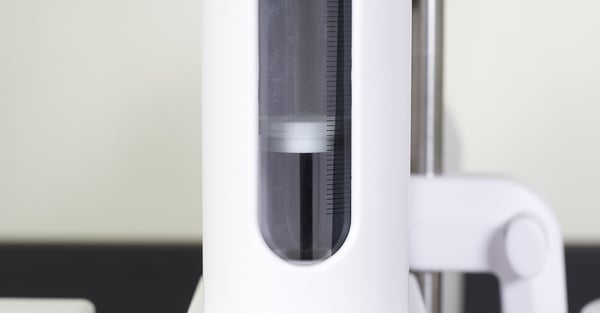A little TLC can go a long way...
While Hanna titrators and equipment are built to be workhorses, it is best to do some maintenance now and then to keep them working in tip-top shape. Now, this doesn't have to be super time consuming or expensive. Take a look through this blog to read about our top tips and rules for maintenance of your titration equipment.
Maintenance & Upkeep
#8 Standardizing the Titrant
The entire principal of titration relies on the premise of adding a titrant of known concentration to determine the unknown concentration of the analyte. Over time, exposure to the environment can cause the concentration of titrant to change. If the concentration the titrant varies from what is programmed into the calculation, the calculated result of the titration will be inaccurate.
Regular standardization of your titrant is important to ensure that results will calculated correctly. To standardize, a titrant is titrated against another freshly prepared standard of a known calculation. When standardizing titrants, it is best to run multiple replicates, ensuring good repeatability between replicates, and update the unit with the average of the results.
The rate at which the concentration of a titrant varies based on environmental and storage conditions, such as relative humidity. A good rule of thumb is to standardize your titrant monthly if the bottle is not fully consumed within that time frame. For prolonged periods between tests, titrant bottles should be capped tightly and stored properly and re-standardized before use.
For more information on how to standardize titrants, contact us!
#9 Servicing Your Instruments and Tools
Serving and calibrating instruments and tools are critical components to maintaining the accuracy of the overall system. Balances and pipettes are typically factory calibrated at least annually, but we suggest contacting your supplier of these tools regarding specific recommendations for calibration frequency. Here, we will focus on the service of the Hanna Instruments Automatic Potentiometric Titrators.
Changing Wearable Parts
Prolonged exposure to titrants can cause both the glass syringe inside of the burette and the tubing to degrade over time. Degradation of these components can cause leaking which can be dangerous to both personnel and the electronics of the titrator. It can also cause the introduction of air into the system, which we have already discussed can have significant impact on titration results. Below are general guidelines for changing the syringe and tubing based on the type and strength of titrant.

| Syringe | |
| Titrant | Frequency |
| Caustic <1N | 1 Year |
| Caustic >1N | 6 Months |
| Non-Aqueous | 1 Year |
| Any Titrant >1N | 1 Year |
| Most Others | 2 Years |

| Tubing | |
| Titrant | Frequency |
| Titrants that crystalize (i.e. silver nitrate) | 3 - 6 Months |
| Most Others | 1 Year |
Calibration of Electronics
Over time, the calibration of the mV and temperature inputs on potentiometric titrators can drift. These inputs are the electronic signal sent by the electrode and temperature probe to the titrator to monitor the reaction and determine the endpoint. In order to maintain the ±0.1 mV accuracy statement of the titrator, Hanna recommends a factory calibration of the electronics in the titrator annually.
Checking the Electrode Health
With consistent use, electrodes will eventually degrade and need to be replaced. A slope check is a technique that can be used to determine the health of an electrode. Specific slope check procedures can be found in the electrode manual. For equivalence point titrations, electrode slopes of 60-120% are generally fine to use for titration. Electrodes outside this slope range should be considered being replaced. For pH end point determinations, we recommend a stricter slope range of 85-105%. General recommendations for electrode lifespan are below, but keep in mind for high-throughput environments, a backup electrode is always advised.
| When Should You Replace Your Electrode? | |
| Electrode Type | Frequency |
| pH | 18 - 24 Months |
| ORP | 3 Years |
| Solid State ISEs | 3 Years |
| Liquid Membranes for ISEs | Quarterly |
| Silver Billet Electrodes | 3 Years |
| Photometric Electrodes | 3 Years |
#10 Training Operators
This guide shows that there are a lot of best practices to consider when performing titrations. It can sometimes be challenging for those without a scientific background to keep all this in mind, so periodic training is essential to maintaining accurate results.
SOPs and posted best practice sheets are helpful reminders, but Hanna recommends annual refresher training of personnel to ensure that new employees learn the skills they need to succeed and to serve as a helpful reminder of best practices for seasoned employees. Keeping and maintaining good training records can speak volumes during a laboratory audit, providing you peace of mind.
Got Questions?
For more information regarding how Hanna Instruments can help you with your titration needs, contact us, at sales@hannainst.com or 1-800-426-6287.
OOPS! Did you happen to miss Part 3 - Reviewing Results? Click HERE to read Part 3!
(Part 2 - Analysis? Click HERE to read Part 2!)
(Part 1 - Sample Preparation can be found HERE!)


